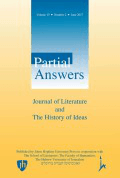
Partial Answers-Journal of Literature and the History of Ideas
Scope & Guideline
Bridging Literature and Philosophy for Deeper Insights
Introduction
Aims and Scopes
- Interdisciplinary Literary Studies:
The journal focuses on a broad range of literature, exploring texts through various disciplinary lenses such as philosophy, history, and cultural studies. - Historical Contextualization:
It emphasizes the importance of historical context in understanding literary works, addressing how different eras shape and influence narrative forms and themes. - Critical Theory and Methodology:
The journal showcases a variety of critical approaches, including feminist, postcolonial, and psychoanalytic theories, contributing to the evolution of literary criticism. - Focus on Marginalized Voices:
There is a consistent emphasis on exploring marginalized perspectives within literature, including gender, race, and cultural identities. - Narrative Theory and Form:
The journal frequently engages with narrative structures, examining how different storytelling techniques affect interpretation and meaning.
Trending and Emerging
- Posthumanism and Technology:
There is an increasing exploration of posthumanism and the impact of technology on literature, reflecting contemporary concerns about identity and existence in a digital age. - Ecocriticism and Environmental Narratives:
A growing interest in ecocritical perspectives is evident, with discussions around the representation of nature and ecological concerns in literature. - Cultural Trauma and Memory Studies:
Recent papers delve into the narratives of trauma and collective memory, examining how literature reflects and shapes cultural understandings of historical events. - Interreligious Dialogue and Textual Interpretation:
Emerging themes include the exploration of interreligious dialogue, particularly in relation to ancient texts and their modern interpretations, highlighting a blend of literary and theological studies. - Narrative Ethics and Responsibility:
There is a notable trend towards examining ethical dimensions of narratives, focusing on how storytelling can engage with moral questions and social responsibilities.
Declining or Waning
- Traditional Literary Canon:
There is a noticeable decline in papers focusing solely on the traditional literary canon, as the journal increasingly engages with contemporary and diverse literary voices. - Strict Genre Classifications:
The rigid boundaries between literary genres are waning, with fewer papers dedicated to genre-specific studies, indicating a move towards more fluid and hybrid forms of analysis. - Historical Biographies of Authors:
Less emphasis is placed on biographical studies of authors, as the journal shifts towards thematic and contextual analyses rather than individual authorial narratives. - Static Interpretative Frameworks:
There is a move away from static interpretive frameworks, as the journal embraces more dynamic and interdisciplinary approaches that challenge traditional readings. - Focus on National Literatures:
The focus on specific national literatures appears to be declining in favor of transnational and global literary studies that reflect a more interconnected view of literature.
Similar Journals

FRENCH FORUM
Illuminating the Tapestry of French Literary and Visual ArtsFRENCH FORUM is a distinguished journal published by the Department of Romance Languages at the University of Pennsylvania, focusing on the rich tapestry of literature, visual arts, and performing arts within the French-speaking world. With an ISSN of 0098-9355 and an E-ISSN of 1534-1836, the journal has evolved since its inception, now covering diverse topics from 2002 to 2023. Although currently ranked in the fourth quartile in both Literature and Literary Theory and Visual Arts and Performing Arts, it provides a platform for emerging voices and critical discussions, making it an essential resource for scholars and practitioners alike. FRENCH FORUM aims to cultivate interdisciplinary dialogue, offering insights that resonate with contemporary cultural and literary studies while supporting the exploration of both canonical and avant-garde works. Despite its open access status, the journal continues to be a relevant player in academia, inviting contributions that challenge, shape, and redefine the landscape of French studies.

CESKA LITERATURA
Celebrating Czech Literature Through Scholarly InsightCESKA LITERATURA is a prestigious peer-reviewed journal dedicated to the exploration and analysis of Czech literature and its role within the broader spectrum of literary theory. Published by the Czech Academy of Sciences, Institute of Czech Literature, this journal has established itself as a vital resource for scholars and practitioners in the field since its inception. With an impact factor that reflects its influence, CESKA LITERATURA provides open access content since 2021, ensuring wider dissemination and accessibility of research findings. The journal aims to foster interdisciplinary dialogue and engage with contemporary literary discourse while covering a range of topics from historical studies to modern literary critiques. With a proud heritage from 2002 to 2024, CESKA LITERATURA holds a notable position, categorized in the Q3 quartile in Literature and Literary Theory for 2023, and ranked #458 out of 1106 in the Scopus database, highlighting its relevance and contribution to the arts and humanities domain. Scholars and students interested in deepening their understanding of Czech literature and contributing to its ongoing discussion are encouraged to explore the rich array of articles and insights available in this important publication.
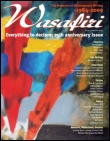
Wasafiri
Celebrating 40 years of transformative cultural exploration.Wasafiri, published by Routledge Journals, Taylor & Francis Ltd, stands as a pivotal platform in the fields of Cultural Studies and Literature and Literary Theory. With a proud publication history extending from 1984 to 2024, this esteemed journal delivers critical insights and cutting-edge research that explore the intersections of culture, literature, and global discourse. Renowned for its academic rigor, Wasafiri holds a Q3 ranking in both its categories as of 2023, showcasing its solid contributions to the scholarly community, reflected in its respectable Scopus rankings—evidencing its relevance and authority, particularly in the literature field. While available through subscription, the journal emphasizes the dissemination of diverse voices and innovative scholarship, appealing to researchers, professionals, and students eager to deepen their understanding of contemporary cultural narratives. Positioned in the United Kingdom, Wasafiri continues to foster vibrant dialogues that challenge conventional paradigms, making it an invaluable resource for anyone engaged in the humanities.

Literary Voice
Fostering Dialogue Through Diverse Literary PerspectivesLiterary Voice is a pioneering journal dedicated to the exploration and critique of literature and its multifaceted dimensions. Established in Punjab, India, and published by LITERARY VOICE, this journal aims to serve as a vital platform for scholars, researchers, and enthusiasts in the field of literary studies. With its ISSN 2277-4521 and E-ISSN 2583-8199, Literary Voice strives to foster intellectual discourse and encourage innovative scholarship through diverse thematic issues. While currently operating without an open access model, the journal provides a crucial space for the dissemination of original research and critical analysis that contribute to the enrichment of literary understanding. As an emerging publication in the humanities, Literary Voice invites submissions from across the globe, making it an essential resource for those looking to engage with contemporary literary debates and foster cross-cultural dialogues.
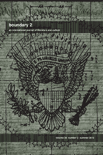
BOUNDARY 2-AN INTERNATIONAL JOURNAL OF LITERATURE AND CULTURE
Advancing Critical Insights Across DisciplinesBOUNDARY 2: An International Journal of Literature and Culture, published by Duke University Press, stands as a pivotal platform for interdisciplinary discourse at the intersection of literature, culture, history, and the social sciences. With an ISSN of 0190-3659 and an E-ISSN of 1527-2141, this journal uniquely addresses the complexities of cultural narratives and theoretical frameworks from 2002 to the present. Although it is not an open-access publication, its rigorous scholarship and critical insights have positioned it within esteemed quartiles: Q3 in Cultural Studies, Q2 in History and Literature and Literary Theory, and Q4 in Sociology and Political Science for 2023. As the academic landscape evolves, BOUNDARY 2 continues to challenge conventional paradigms, making it an essential resource for researchers, professionals, and students eager to explore contemporary issues in literature and culture.
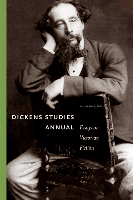
Dickens Studies Annual
Revealing the Impact of Dickens on Modern ThoughtDickens Studies Annual, published by Penn State University Press, is a distinguished journal devoted to the scholarly examination of Charles Dickens and his literary contributions. With an ISSN of 0084-9812 and an E-ISSN of 2167-8510, this publication provides a vital platform for researchers, students, and professionals in the field of Victorian literature and cultural studies. The journal aims to explore the complexities of Dickens's works, encompassing critical analysis, historical context, and interdisciplinary approaches, thus positioning itself as a critical resource for understanding the broader impact of Dickens's writing on literature and society. Although not currently adopting an open access model, readers can access a wealth of rigorously researched articles that contribute significantly to ongoing dialogues within Dickens studies. The journal's focus on innovation and excellence ensures that it remains an essential reference for those seeking to deepen their understanding of one of literature's most influential figures.

CHASQUI-REVISTA DE LITERATURA LATINOAMERICANA
Cultivating Critical Perspectives on Cultural ExpressionsCHASQUI-REVISTA DE LITERATURA LATINOAMERICANA is an esteemed academic journal published by Arizona State University, dedicated to the exploration and dissemination of research in the fields of Literature and Literary Theory and Cultural Studies. With an ISSN of 0145-8973 and an E-ISSN of 2327-4247, the journal serves as a critical platform for scholars examining the complexities of Latin American literature from diverse perspectives. Notably ranked in the second quartile in its field as of 2023, CHASQUI reflects its commitment to quality and impactful scholarship. The journal operates within a two-year converged publication cycle, ensuring it remains at the forefront of contemporary discussions and innovations in its disciplines. Although there are no open access options, researchers and students alike will find valuable insights within its pages, bolstered by a robust academic community. Through its dedication to fostering literary scholarship, CHASQUI plays an integral role in advancing the understanding of Latin American narratives and cultural expressions.

Yearbook of Comparative Literature
Bridging Cultures, Illuminating LiteratureThe Yearbook of Comparative Literature, published by University of Toronto Press Inc., stands as a vital resource for scholars within the interdisciplinary field of comparative literature. With a focus on fostering rigorous academic discourse, this journal delves into the dynamic interplay of literary traditions, cultural contexts, and critical theories across diverse languages and epochs. Though it has discontinued its coverage in Scopus since 2012, the Yearbook continues to be an important platform for innovative research and interpretation, appealing to a broad range of researchers, professionals, and students alike. By bridging gaps between cultures and highlighting neglected voices in literature, the Yearbook of Comparative Literature holds significant relevance in enhancing our understanding of global literary landscapes.
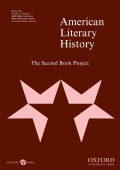
AMERICAN LITERARY HISTORY
Advancing Scholarship in American Literary ContextsAMERICAN LITERARY HISTORY, published by Oxford University Press Inc, is a leading peer-reviewed journal dedicated to advancing the understanding of American literature within the broader contexts of cultural studies and history. With an impressive impact factor reflecting its Q1 ranking in Cultural Studies, History, and Literature and Literary Theory, this journal serves as an essential resource for researchers, professionals, and students alike. Covering a wide range of topics, it seeks to illuminate the historical and cultural dynamics that shape literary production in the United States from 1989 to 2024. Although not an open access journal, AMERICAN LITERARY HISTORY remains a pivotal platform for scholarly discourse, encouraging rigorous scholarship and critical engagement with literary texts. The journal's strong Scopus rankings further emphasize its significance, ranked among the top journals in its field, making it an indispensable tool for anyone seeking to explore the rich tapestry of American literary heritage.
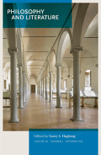
PHILOSOPHY AND LITERATURE
Exploring the Nexus of Thought and Narrative.PHILOSOPHY AND LITERATURE is a distinguished journal published by Johns Hopkins University Press, dedicated to exploring the intricate relationships between philosophical inquiry and literary expression. With an ISSN of 0190-0013 and an E-ISSN of 1086-329X, this journal has established itself as a noteworthy platform for scholars in the fields of literature and literary theory, as well as philosophy, inviting a diverse array of critical perspectives. Since its inception, the journal has evolved, with the most recent converged years extending from 2002 to 2024. It currently holds a Q3 ranking in Literature and Literary Theory and a Q4 in Philosophy for the year 2023, reflecting its commitment to academic rigor and scholarly contribution. Although it does not offer open access, it remains an essential resource for researchers, professionals, and students eager to engage with thought-provoking discussions and analyses. With its unique focus on the interplay between narrative and philosophical paradigms, PHILOSOPHY AND LITERATURE continues to be instrumental for those looking to deepen their understanding of the human experience through the lenses of both literary art and philosophical thought.